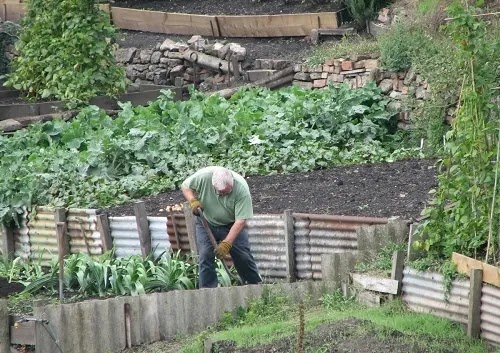7 Tips for Successful Winter Gardening

The warm temperatures of summer are quickly waning, and winter will soon be upon us. If you’re considering starting a garden this year, you should know that there are different challenges you’ll face than in the spring or summer, with limited sunlight hours, shorter days, and colder temperatures being just some of them. Luckily, there are some things you can do to help make your winter gardening more successful. Here are seven tips that will help you get started.
1) Select plants suitable for your growing conditions
When you're trying to figure out what plants to grow in the winter, it can be a little tricky. Growing vegetables takes time and if your growing season is limited, some vegetables won't work as well as others. Tomatoes and eggplants would be two examples of vegetables that are better grown during warmer months than during the winter months. There are plenty of options available though so you shouldn't get discouraged! Here are some tips on what to grow this winter:
- Container gardens: these tend to work great during the colder months because they're much easier to take care of and all you need is some decent soil and a good location with sun exposure. Plus, they're easy to store over the winter!
2) Mulch to keep soil temperatures from dropping too low
As the temperature outside cools, it is time to be sure your plants are also well prepared. Plants will be able to survive lower soil temperatures, as long as they're provided with some protection from wind and frost. One of the best ways to ensure that happens is by mulching. It will not only keep the soil warm during cold nights, but it can also work to create a mini ecosystem that promotes microbial life in the soil. A layer of 2-3 inches is usually sufficient, though more can be applied if there's already snow on the ground or if you live in an area where there's a lot of natural rainfall throughout the winter months.
3) Prune any dead branches off trees and shrubs
When winter rolls around, it's time to start pruning away any dead branches. Dead, diseased, or broken branches can spread disease to your entire plant, so you'll want to get rid of them before the cold weather sets in. If you wait until spring and warmer weather, that diseased branch might have damaged several other plants. Branches also get heavier with snow and ice on them during the winter and may be too much weight for branches near the ground to hold up. You can prune any branches while they're still green, but it's best to let all of your plant life finish out the season before you remove anything.
4) Plant cold hardy trees and shrubs in early fall
If you want your garden to survive winter with minimal damage, then plant trees and shrubs that can withstand colder temperatures. First, start preparing your garden for the winter by clearing out any dead plants and making sure to fertilize them before covering the ground in mulch. This will protect the soil from erosion during winter storms. Next, buy cold hardy trees and shrubs to fill up any bare spots in your yard or garden. These can be planted between October and November so they have enough time to establish themselves before winter arrives. The goal is to have at least 50% shade coverage on all exposed surfaces of your yard or garden.
5) Keep container plants indoors until frost is gone
Certain types of plants do better in the garden year-round. Others don't need to be relocated but can benefit from spending a few months inside. When you bring plants indoors, make sure they are watered properly and placed in locations with plenty of light to avoid causing them any stress. The leaves on houseplants tend to turn yellow or brown if they're not getting enough light. Alternatively, other symptoms could include a stiff stem and stunted growth. The type of plant may dictate how often it needs watering, but most plants will require at least once a week during the winter months—more if you live in an area with warmer temperatures.
6) Water deeply, but less frequently
Winter is the perfect time to plant cool-season crops like peas, spinach, and lettuce in your garden. The low temperatures will inhibit weed growth and frost protects the plants. Water deeply and less frequently to help cool your soil down. Consider installing a water fountain in your backyard or rooftop to help prevent frozen pipes during cold spells. Finally, harvest mature plants during this time so they don't use up valuable resources from new plants coming out of the ground in springtime.
7) Leave weeding until spring
The best time to start a garden is in the fall when the plants and soil have cooled down from summer. This prevents the garden from growing too quickly, which can lead to disease or insect damage. In addition, weeds that come up in winter may be killed by frost and snow, so wait until spring to weed. Furthermore, winter is a perfect time for sowing seeds of hardy annuals like pansies and petunias that won't need extra watering as they go dormant in late fall. Plus, this will give them plenty of time to grow before blooming in late spring when they need more water than during dormancy.
We hope you enjoy these ideas! Let us know if you want more posts like this one!
Post a Comment